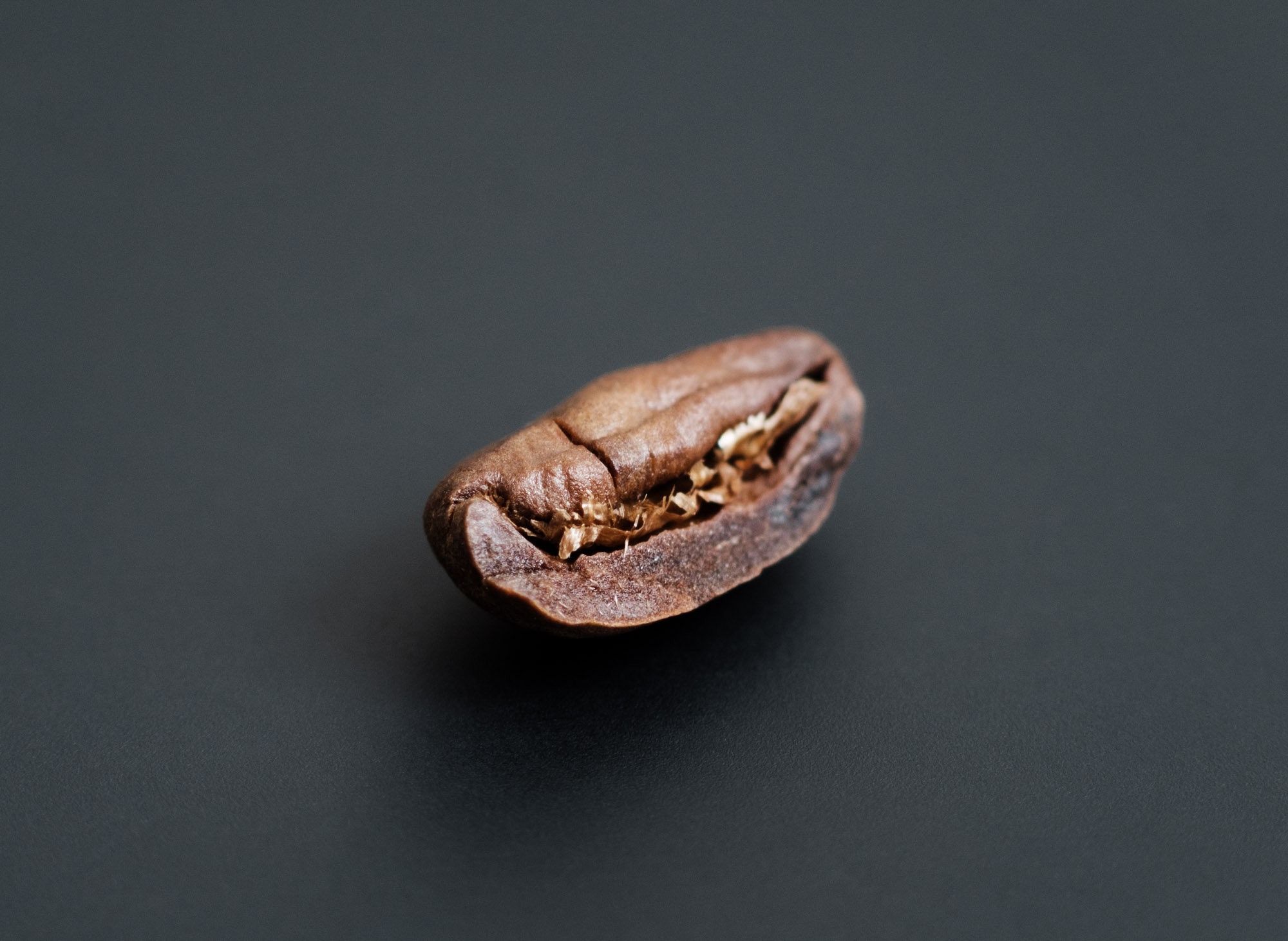Broken beans can occur before or after roasting. At some point after the beans are dried, whether at the dry mill or in the roasting machine, the beans have been damaged. In some cases broken beans may be the result of a defect knowns as brittle beans, which makes them more prone to breaking apart. The brittle bean defect is the result of beans that have been heated to over 50° C (122° F) during the drying process (J N Wintgens, 2004).
If a bean is chipped after roasting, it won’t make an appreciable difference to coffee quality. You can tell when this is the case because the cracked edge of the bean will still appear sharp.
 A photo of a bean that was cracked after roasting. The edges of the crack are sharper and haven’t been rounded off during either processing or roasting.
A photo of a bean that was cracked after roasting. The edges of the crack are sharper and haven’t been rounded off during either processing or roasting.
The main problem with chipped beans that have been cracked before or during roasting is that they are likely to experience the same issues that we encounter with empty beans. Their bowl shape means that moisture can escape from cracked beans more rapidly, so they are more likely to roast more quickly than ordinary beans.
One type of chipped bean is easily mistaken for an empty bean. Sometimes a plant produces some unusually large beans known as elephant or monster beans. These usually appear to have two centre cuts. They are the result of a false polyembryony; this is the coffee equivalent of identical twins. More than one ovule develops in each locule, causing the formation of abnormal seed shapes (C A Krug and A Carvalho, 1951). One part appears to be wrapped around the other. J N Wintgens, (2004) refers to the inside as an elephant ear.
 A cross section of a coffee cherry containing an elephant bean and two triangular beans.
A cross section of a coffee cherry containing an elephant bean and two triangular beans.
 A gif of an elephant bean with two centre cuts
A gif of an elephant bean with two centre cuts